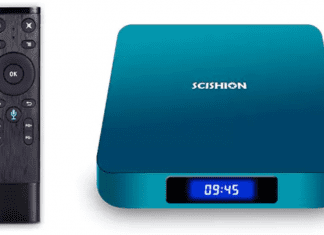After successfully launching your app is not the end. It’s just the start! Once your app is out, ensuring its continued smooth operation and user satisfaction becomes crucial.
Mobile app performance metrics are significant for decoding the extent to which an app helps the business it supports and revealed where improvements are required.
However, tracking specific metrics, known as Key Performance Indicators (KPIs), becomes your compass for maintaining the App performance and success.
These performance metrics show how fast your app loads, how often users encounter glitches, and how effectively the business achieves its goals. Many developers have their own set of Key Performance Indicators (KPIs) to track these aspects.
Leading Chicago mobile app development companies often employ a range of KPIs tailored to their specific projects and objectives.
So, in this blog, we will cover some of the significant KPIs that Chicago app development companies use to evaluate the quality and success of your app.
What is Application Performance Metrics?
Application Performance Metrics refer to the various measurements used to assess the effectiveness and efficiency of an application.
These metrics act as vital signs, providing insights into how well an app functions and performs in real-world scenarios. They encompass a range of aspects, including load times, responsiveness, stability, resource utilization, and user experience.
By quantifying these elements, performance metrics offer developers and businesses a clear understanding of an app’s health and areas for improvement.
They work as powerful tools for improving user satisfaction, identifying glitches or errors, and guiding improvements to guarantee that applications run seamlessly and deliver a top-notch experience to users.
Lots of mobile app development agencies, professionals, and Miami app developers are leveraging these metrics to pinpoint specific user pain points, optimize functionalities, and tailor their applications to meet the preferences and demands of their target audience.
Essentially, these metrics serve as the backbone for evaluating, maintaining, and enhancing an app’s performance throughout its lifecycle. So, let’s discuss the important KPIs to measure the app performance in the next section.
10 Important Application Performance Metrics to Consider
To make sure your app meets user expectations and retains its competitive edge, it’s significant to monitor and analyze the right performance metrics.
Below we have mentioned the 10 best key metrics and mobile app KPIs that will assist you in analyzing the performance of your app, so you’ll better know how to optimize your app’s performance and improve user experience.
-
App Response Time
This metric measures the duration an app takes to respond to a user’s action. A quicker response time contributes to a smoother user experience.
For instance, in e-commerce apps, a faster response time during checkout impacts user satisfaction and conversion rates. Developers often aim to minimize response times by optimizing code and server performance.
-
Latency
Latency quantifies the delay between a user’s action and the app’s response initiation. It’s essentially the period taken for data to travel from its source to its destination, encompassing processing time, network transit time, and any other delays within the system.
Monitoring and optimizing latency are crucial for ensuring efficient, responsive, and high-performing applications, particularly in real-time systems like gaming, financial transactions, and video streaming, where even milliseconds of delay can be noticeable and impactful.
Addressing latency issues involves optimizing networks and systems to reduce delays and enhance user experiences.
-
Error Rate
This metric monitors the frequency of errors or bugs within an application. High error rates suggest potential issues affecting user experience or app stability.
It quantifies the proportion of unsuccessful requests, transactions, or operations compared to the total number attempted over a specific period. These errors can range from simple user input mistakes to more critical system malfunctions.
Reducing error rates involves thorough testing, debugging, and continuous monitoring to ensure smoother app functionality.
-
Security
Security exposure within application performance metrics refers to the vulnerability or susceptibility of an application to security threats, breaches, or attacks. You have to check how much your app is covered with security techniques and how much is exposed.
Measuring security exposure involves assessing various aspects such as the robustness of authentication mechanisms, encryption strength, handling of sensitive data, and flexibility against common security vulnerabilities.
Justifying security exposure requires a proactive approach encompassing strict security protocols, regular security audits, patches for identified vulnerabilities, and adherence to best practices in secure coding and architecture.
- User Satisfaction or ApDex Score
User satisfaction often quantified through Apdex (Application Performance Index) scores, is a crucial metric that measures how satisfied users are with an application’s performance.
It combines the response time and user expectations into a single metric, offering a standardized measure of user satisfaction.
Higher scores indicate better user experiences, while a lower score suggests that a notable percentage might be encountering delays or issues impacting their satisfaction.
Monitoring and improving Apdex scores involves optimizing performance factors, streamlining workflows, and addressing bottlenecks to ensure that the majority of users have a positive and efficient experience while using the application.
-
Request Rate
Request rate is a critical application performance metric that measures the frequency at which a system receives and processes user requests or transactions within a specific timeframe. It reflects the workload and demand placed on the application, indicating its ability to handle varying levels of traffic.
Knowing how much traffic your app receives will have a great impact on the success of your business.
Sudden spikes or drops in request rates can reveal patterns in user behaviour, marketing campaigns, or unexpected events impacting application usage.
Monitoring request rate helps in understanding the system’s capacity limits, scalability requirements, and potential performance bottlenecks.
-
Memory Usage
It refers to the amount of computer memory an application consumes during its operation. Tracking memory usage is essential as it directly impacts an app’s stability, responsiveness, and overall performance.
High memory usage can lead to sluggishness, crashes, or even app failures, significantly affecting the user experience.
Balancing memory usage ensures that the application operates within acceptable limits, avoiding excessive strain on the system, and maintaining optimal performance even under varying workloads.
Effectively managing memory usage is crucial for ensuring the application’s stability, responsiveness, and overall performance while maximizing resource utilization.
-
Conversion Rate
Conversion is a key metric that usually measures the percentage of users who successfully finish the desired action or conversion goal.
It signifies the effectiveness of the application in driving user actions that align with specific objectives, such as making a purchase, signing up for a service, or subscribing to a newsletter.
Monitoring conversion rates provides valuable insights into the application’s ability to engage users and guide them through the desired pathways. A high conversion rate indicates that the application effectively persuades and assists users in fulfilling the intended actions.
By continuously analyzing and improving conversion rates, applications can refine their performance, increase user engagement, and achieve their business goals more effectively.
-
Retention Rate
Retention rate is a critical application performance metric that evaluates the percentage of users who continue to engage with the application over a specific period. It measures the ability of an application to retain users after their initial interaction, sign-up, or installation.
A high retention rate indicates that the application effectively meets user needs, provides value, and encourages users to return and continue using it over time.
By focusing on improving retention rates, applications can build a loyal user base, increase user lifetime value, and establish a sustainable and successful presence in the market.
-
App Store Reviews
App store ratings and reviews are essential metrics that reflect user sentiment and satisfaction with an application. These metrics provide direct feedback from users regarding their experiences, functionalities, and overall satisfaction with the app.
Monitoring app store ratings and reviews is crucial for understanding user perception, identifying areas for improvement, and gauging the application’s performance in meeting user expectations.
By actively managing and responding to app store ratings and reviews, applications can cultivate a positive reputation, foster user trust, and continuously evolve to meet user needs, ultimately driving long-term success.
Final Words
Determining the app’s performance is quite an important factor in app development and maintenance. Following the best KPIs outlined in the blog will give you the main insights into your app’s performance.
By evaluating these metrics, app developers can identify areas for improvement, increase user experience, and boost app usage.
Also, keep in mind that mobile app performance is an ongoing process, as the technology evolves, user’s expectations change. So it’s important to stay cautious, constantly monitor your app’s performance, and adapt to emerging trends and user needs.











